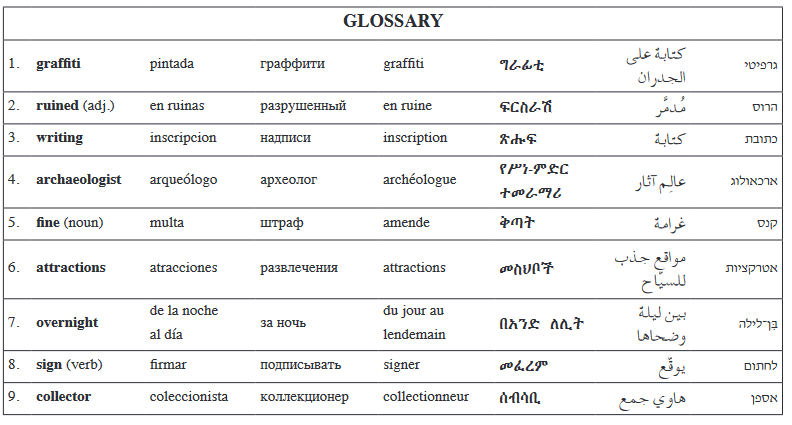יש לענות על כל השאלות בדף העבודה. עבודה נעימה.
GRAFFITI OLD AND NEW
I Tourists walking through the streets of the ancient city of Pompeii in southern Italy can see
some of the oldest graffiti1 in the world. There on the ruined2 walls are drawings and writings3
from 2,000 years ago. The local graffiti artists wrote poems and political messages and drew ads
for breads and cakes being sold in the shops. Archaeologists4 studying this ancient city have
learned a lot about its daily life from the thousands of examples of graffiti.
II A visit to Rome, the capital of Italy, shows that people still paint and write on the walls of
buildings. In Italy today, however, it is illegal to do so, and the artists have often received fines5
of up to 1,000 Euros. But it is not just Italy that has laws against graffiti. In most other countries,
artists may only paint on a building with the permission of its owner – even if nobody is living there.
III Some cities throughout the world have special areas where artists are allowed to paint graffiti
on any building they choose. The artists there can work slowly and carefully, taking days or even
weeks to complete a painting. Several cities, such as Bogota in Colombia, have amazing graffiti
on many of their streets. Some of the works are so beautiful and creative that they have become
popular tourist attractions6.
IV Sometimes graffiti appears overnight7 on walls that artists are not allowed to paint on. The
artists work quickly and quietly when no one is around, and usually do not sign8 their name so
that they cannot be identified by the police. But according to the law, a painting without the artist's
name on it belongs to the owners of the building, and they may do whatever they like with it.
In fact, some owners sell the best works to art collectors9. That means removing the wall with
the graffiti on it, transporting it to the collector, and repairing the building. This is expensive but
owners make a lot more money than it costs them.
V One graffiti artist, who calls himself Q-Vee, found out that a work of his had been sold to
a collector for more than $100,000. "I don't care about not getting any money," he says. "My only
problem is that I made that painting for people walking down the street to enjoy. Now that can't
happen anymore."
